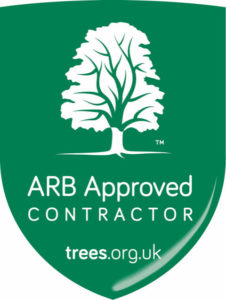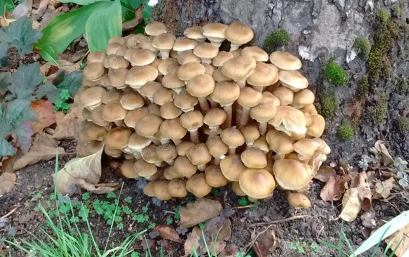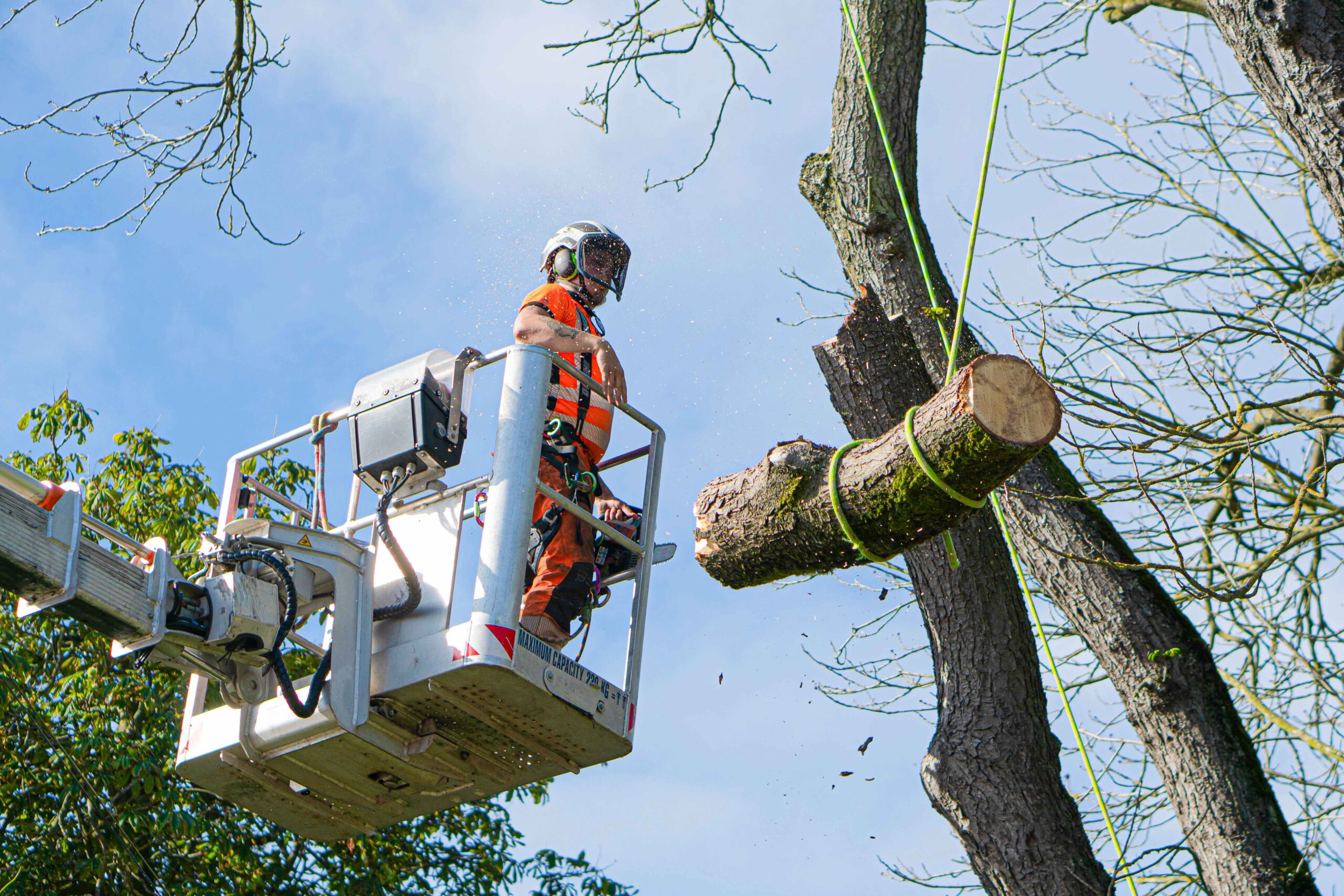Armillaria spp. (more commonly known as honey fungus) is one of the most destructive fungal diseases that affects trees and shrubs in the UK. It spreads underground and attacks the roots, leading to decay, dieback, and in many cases, the death of the plant. By the time visible signs appear, the damage can already be quite advanced.
If you’ve noticed unusual mushrooms growing near your trees, or your plants are looking unwell for no clear reason, honey fungus could be the cause.
What is Honey Fungus?
The name ‘honey fungus’ comes from the colour of the mushrooms it produces, which are often a golden ‘honey-brown’.
While the mushrooms are what most people notice, the real threat of this disease lies underground. The fungus spreads through long, black strands called ‘rhizomorphs’, which grow through the soil from infected roots and latch onto nearby healthy trees and shrubs, breaking them down.
Once attached, the fungus penetrates the root system, killing the tissue and cutting off the tree’s ability to take up water and nutrients. It’s a slow moving but persistent process, and once it takes hold, it can be very hard to shift.
How to spot the signs
Honey fungus causes root rot, which will lead to the fruiting production of the clusters of mushrooms at the base of trees in the autumn that is infected with the fungi. Infection of Armillaria spp. is caused when rhizomorphs growing
Recognising honey fungus early can be difficult, as it often remains hidden beneath the surface. However, there are several signs to watch for:
- Mushrooms at the tree base: In autumn, you may see clusters of honey-coloured mushrooms around the base of the tree or nearby stumps. These usually appear in groups and have pale gills with a central darker spot on the cap.
- White fungal growth under bark: Peeling back a small section of bark near the base of a struggling tree may reveal a white, felt-like fungal growth. This is a strong indication of infection.
Bleeding or cracking bark: Some trees will start to ooze a dark sap or develop splits in the bark, often close to the ground. - Crown dieback: Leaves may yellow, wilt or fall prematurely. Sometimes the top of the tree (the crown) starts to die back, or fails to produce healthy new growth.
Unusual flowering: In some cases, a stressed tree may produce an unusually heavy display of flowers just before going into decline.
These symptoms don’t always mean honey fungus is present, but they are strong indicators, meaning it’s best to investigate them further. A professional inspection can help confirm what’s going on.
Which species can be affected?
Honey fungus has a wide host range and can affect over 200 species of trees and shrubs. It tends to favour hardwoods, but softwoods and ornamental plants can be vulnerable too, especially if they are already under stress from other conditions. Commonly affected species include the below:
- Hawthorn
- Holly
- Sycamore and other maples
- Beech
- Alder
- Willow
- Cypress and false cypress
- Lilac
- Hornbeam
- Cotoneaster
Even healthy trees can be infected if conditions are right. Dense planting, poor drainage, or old tree stumps left in the ground can all help the fungus spread.
Can honey fungus be treated?
Unfortunately, there is no chemical treatment for honey fungus. Management usually involves improving soil conditions, removing infected wood and roots, and, in some cases, removing the tree entirely to prevent the fungus spreading to nearby plants. The key is early detection. If caught soon enough, some trees may stabilise with the right care and ongoing monitoring. In other cases, planting resistant species in infected areas can help prevent future problems.
What should I do if I’m worried?
If you suspect honey fungus in your garden, the best thing to do is get a professional opinion. Sending clear photos of the mushrooms or affected area can often help with a quick diagnosis. It’s much easier to assess the situation early on, before major damage sets in.
At Dr Stump, we deal with this sort of issue regularly and can provide practical advice, on-site inspection, and any follow-up work needed to protect your trees and surrounding plants.
Need expert help?
There’s no quick fix for honey fungus, but speaking to a professional arborist can make all the difference. At Dr Stump, we can quickly identify the honey fungus, assess the situation, and help you manage the impact. Whether that means careful monitoring, adjustments to planting, or tree removal, we’ll support you every step of the way. Give us a ring on 01603 358778 or send a Whatsapp to get in touch with the team today.




